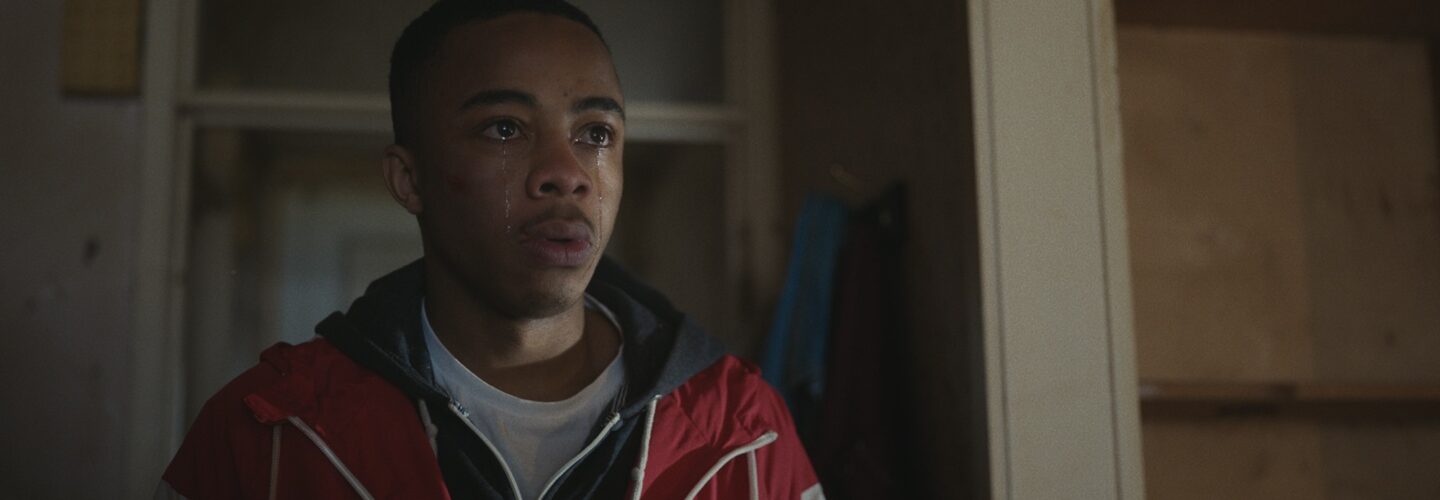
A film that first caught DN’s attention as a selection in our 2021 Top Ten Picks from The Shortest Night, Tap Boy from filmmaker Will Kenning originated from a desire to explore gang culture and violence from a perspective that avoided clichés and offered a fresher, more nuanced perspective. Having previously worked with Keenan Munn-Francis on a very different style of project, Kenning was inspired to write his arresting dive into the exploitative practice of cuckooing as part of a County Lines operation specifically for the actor/dancer. With that initial spark ignited, a deep dive into the history of tap dance and its use as a form of rebellion against oppressors, brought the whole script together and saw Kenning selected for the 2020 Challenge ALEXA scheme which, alongside the use of ARRI gear, gave the project the momentum and accountability it needed to make it across the finish line. Despite being set in the grim reality of gang violence and drugs, Tap Boy offers a glimmer of hope and, as Kenning initially intended, avoids falling into stereotypical depictions of the subject in its approach and execution. Following Tap Boy’s successful festival run, DN spoke to Kenning ahead of today’s online premiere about balancing the violence reality of life for those caught up in County Lines drug gangs alongside the film’s more fantastical dance elements, finding inspiration for location from his hometown and what it meant to be working with Directors UK as part of Challenge ALEXA.
Tap Boy offers a fresh take on the predatory practice of County Lines, can you tell us about the idea behind the film’s conception?
I’d been working on an all singing, all dancing Disney TV series with my friend Keenan Munn-Francis – great fun but we were ready to make something a little darker by the end of the process. We wanted to make a gritty street drama but were keen to avoid stereotypes and not make something that had been made a thousand times before. We thought it might be interesting to combine the world of dance with the world of gang culture to provide a fresher take, so that’s where the idea for Tap Boy came from.
We wanted to make a gritty street drama but were keen to avoid stereotypes and not make something that had been made a thousand times before.
It seemed a crazy idea at first (a boy trapped in a County Lines drug gang learns to tap dance) but the more we researched the origins of tap it made perfect sense. Tap was born after slave owners took away percussive instruments and so slaves used their feet to create percussive music instead. What do you do to escape your oppressors when you have nothing but the shoes on your feet? What would it be like if you had no knowledge of the tap history that had gone before you and you discovered it for yourself?
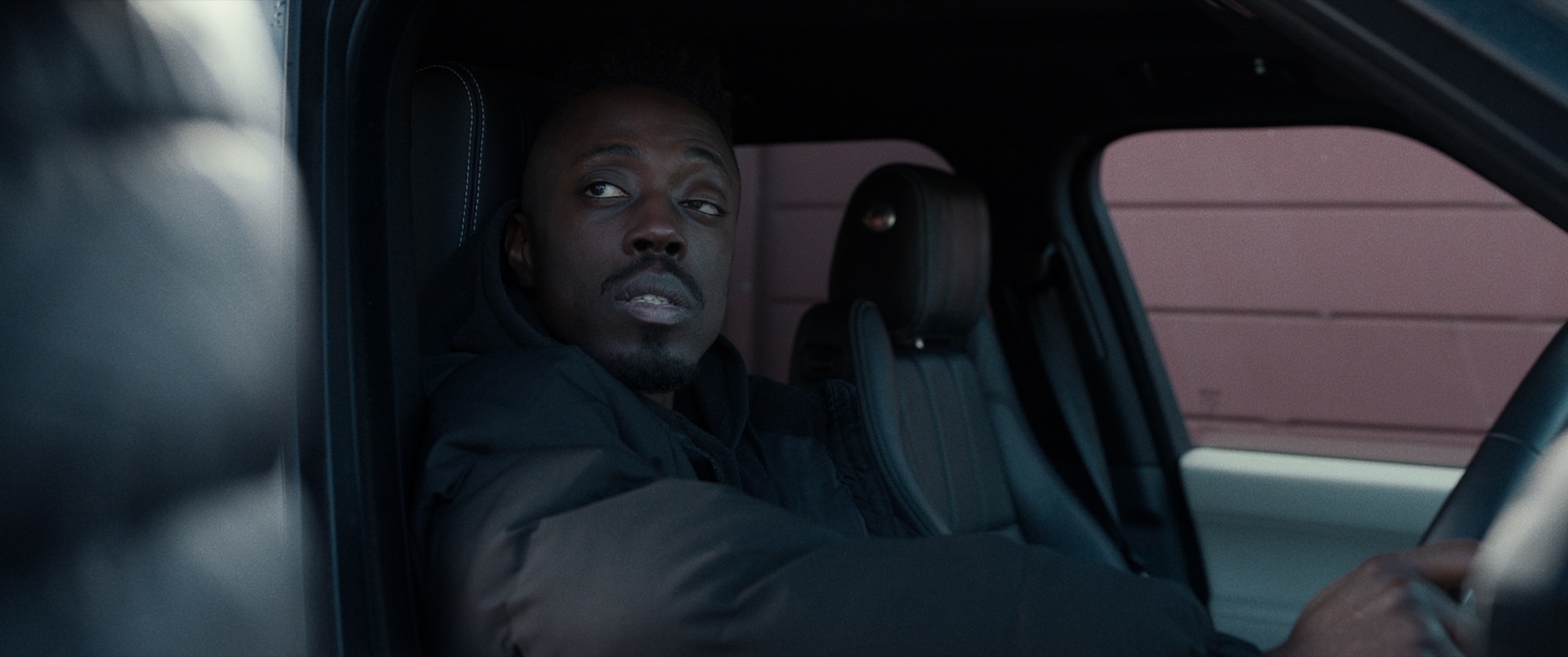
With the concept in place, how did you find your way to a satisfying balance between the inherent violence of the subject matter and the surreal aspects of the dance elements?
Tap by its nature is percussive and impact driven, so I knew that we could play with that language to flip between the worlds of dance and physical violence. But like most of these things, the script came into focus slowly and with the help of collaborators. Early drafts had less violence in them but early readers suggested we should see more of the physical violence to help us understand the horrors of the reality of the situation. Then again we found more ways to heighten the violence in the edit – the fight/dance in the tunnel was an idea that I wasn’t sure would work until it got into the edit.
Were you worried that audiences might take the film too literally?
I don’t think so – it’s quite a high concept idea so I think most people would assume it only really exists in a fictional setting. Having said that, it’s not totally outside the realms of possibility and that’s really important – life is strange and I’m sure stranger things have happened. The kernel of the idea built from how tap dance originated at the beginning of the 19th century when slave owners took away traditional African percussive instruments and slaves invented percussive dance to preserve their cultural identities. Being trapped in a modern County Lines gang is a form of modern slavery so why couldn’t history repeat itself?
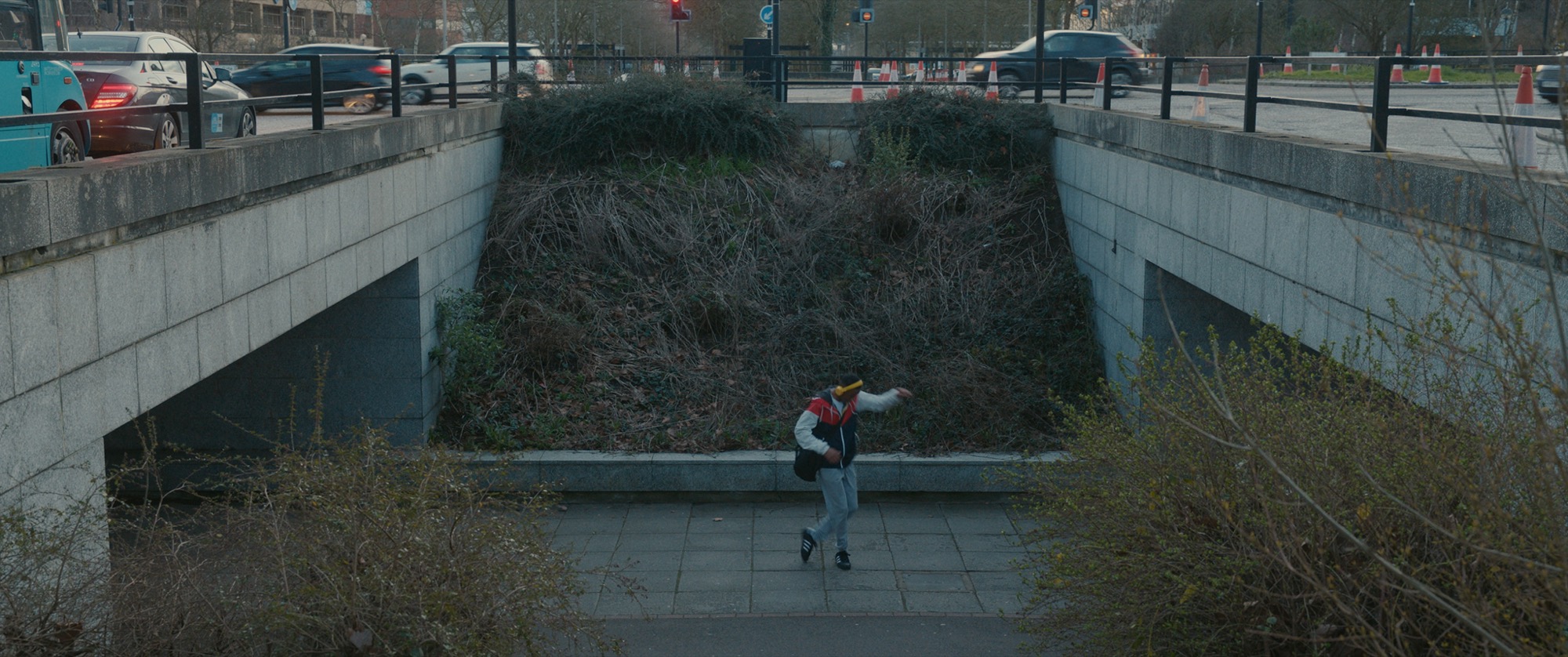
Can you tell us more about the choreography of the tap which we see evolve throughout Noah’s story?
We were so fortunate to have the talents of Lizzi Gee as choreographer on this film. Her brief was to tell the story of someone who had never heard or seen tap dance, have them discover it and then try and recreate it for themselves. This is something she had experience in as she’s taught many of the young boys who play Billy Elliot to dance in the stage show. So the first dance moves are initially clumsy and experimental but then evolve into something more elaborate. It was also important to us however that the moves never got too accomplished – it was always more about a passion and a feeling within that Noah had to express somehow. Every move he performs we have to believe he’s taught himself.
It was also important to us however that the moves never got too accomplished.
The film’s score and soundtrack are great. How did you find music cues which worked for the dance choreography whilst also expressing the film’s wider themes?
This was a mix of having to be practical and also getting what we needed. Music clearances are so hard and expensive to get. We initially went down the route of trying to use tracks from a recognised artist but soon realised we didn’t have the budget. So I started with what tracks had to be stock music and which tracks needed to be composed. Our composer Michael Rouse did an amazing job creating a cohesive voice for the film by scoring original music that glues all the stock pieces together. The idea is that Michael’s music mirrors what Noah feels and the stock music is the music that exists in his world.
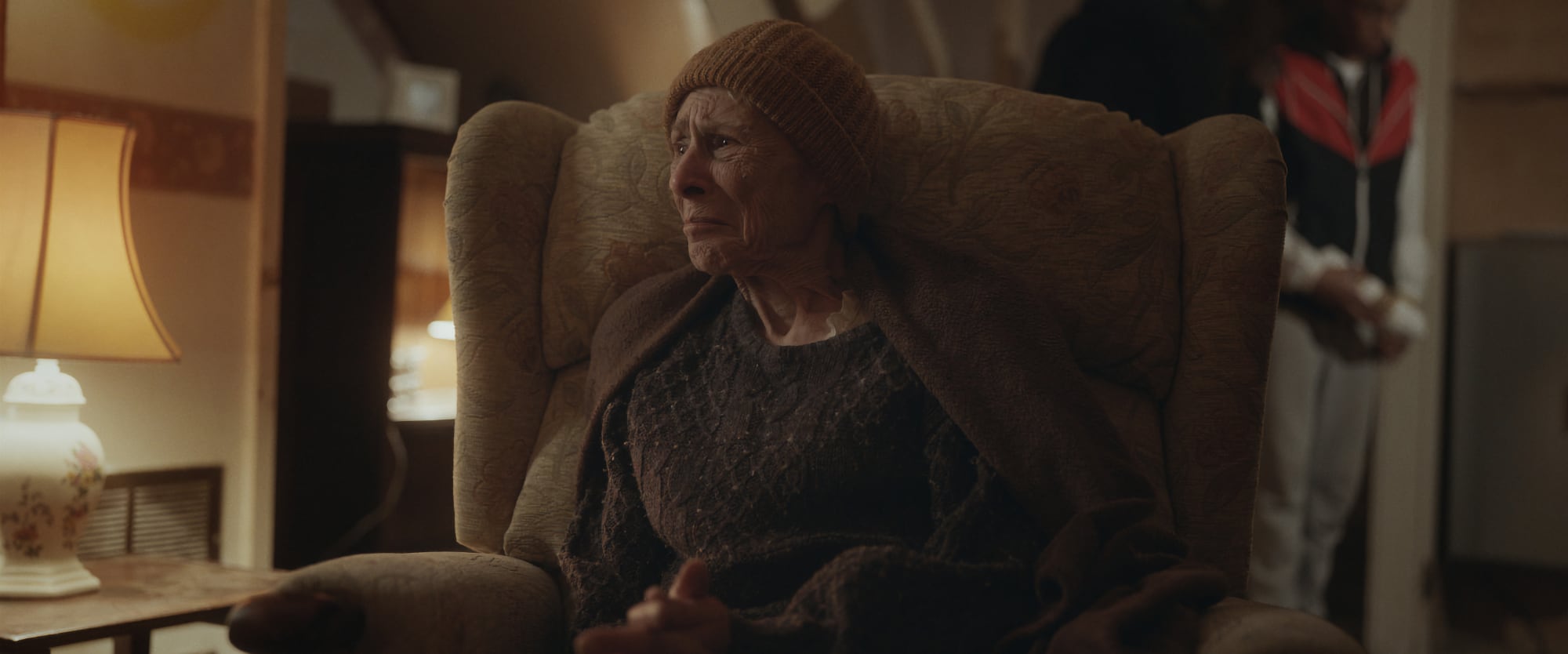
Both the house and the gritty concrete jungle locations are key elements of the film, how did you scout out your locales?
I live in Leighton Buzzard which is just outside Bletchley and Milton Keynes and I’ve always thought that the landscape is strangely cinematic with its hard concrete lines and architectural symmetry – a perfect tap dance playground. Unfortunately, the area also has a genuine problem with County Lines gangs so it felt like the right place to tell the story. After that was decided Producer Brenda Newhouse and I called all the estate agents we could and asked if they had any properties that were so bad they couldn’t even rent them. It was either that or taking a nice home and making it look much worse! We were very lucky to get the help of a wonderful local estate agent called Duncan who helped us find a house that was about to be gutted and renovated. It had no running water and we had to rebuild the kitchen but it was worth it to get the bleak setting we needed.
Tap by its nature is percussive and impact driven so I knew that we could play with that language to flip between the worlds of dance and physical violence.
I thoroughly enjoy the way you play around with angles here, what informed the cinematographic style of Tap Boy?
That’s kind of you to say. Sometimes these choices are a result of collaboration with our brilliant DOP Howard Mills (he had a meticulous approach to the chase sequence especially which he plotted out separately) and sometimes they come about because of necessity. There were angles in the house we couldn’t shoot because it was just a shell so we had to get inventive with our choices.
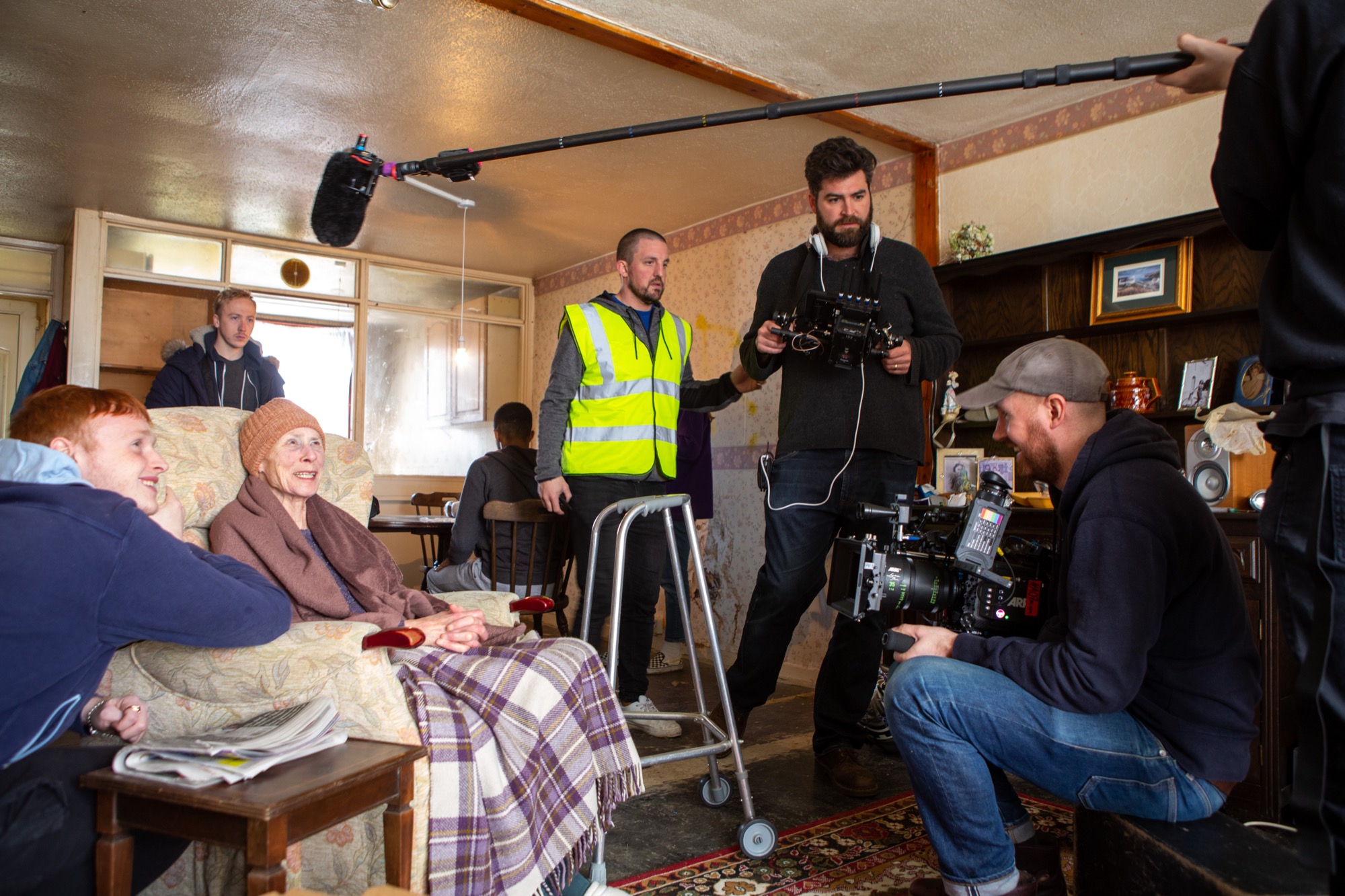
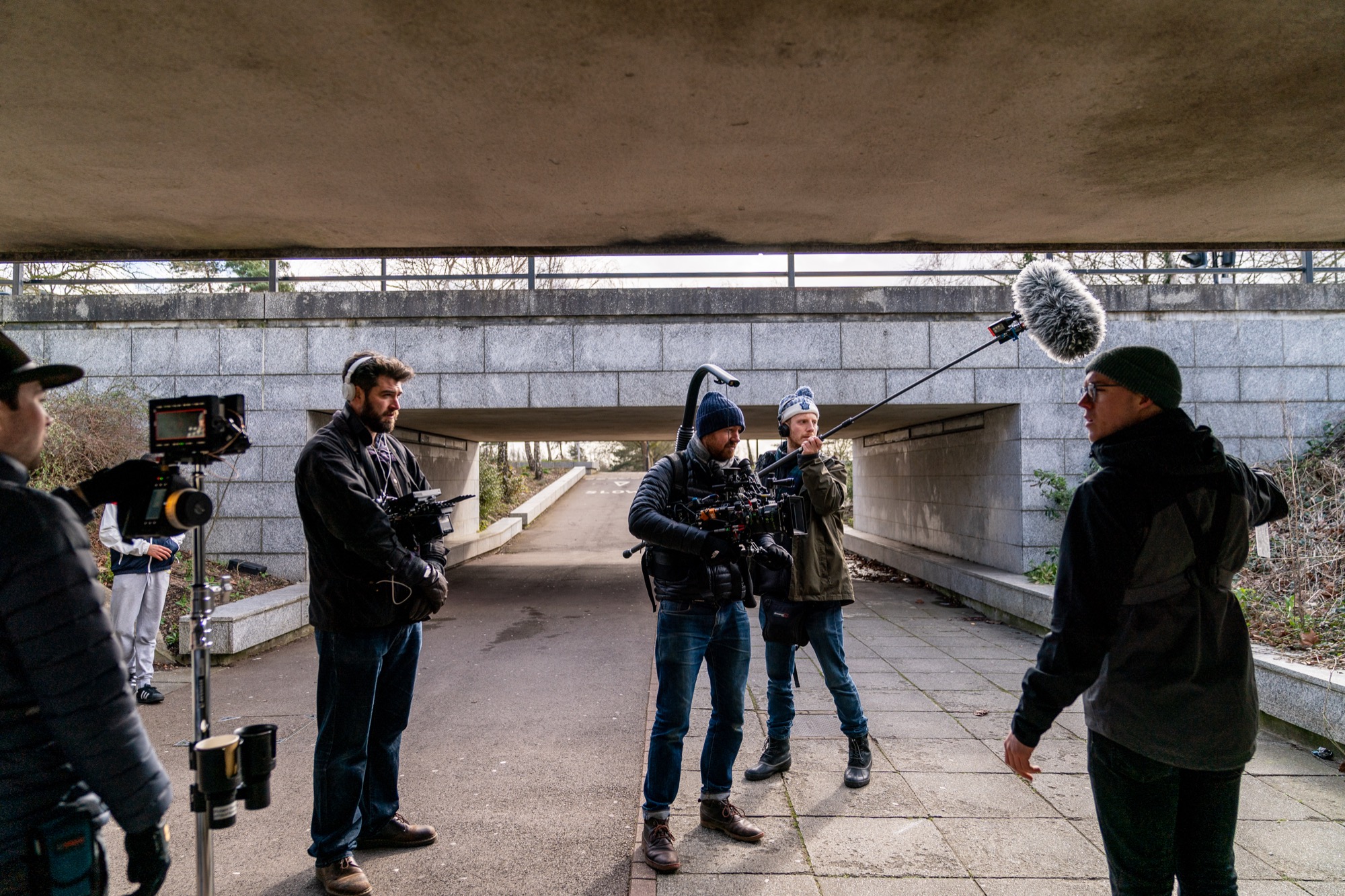
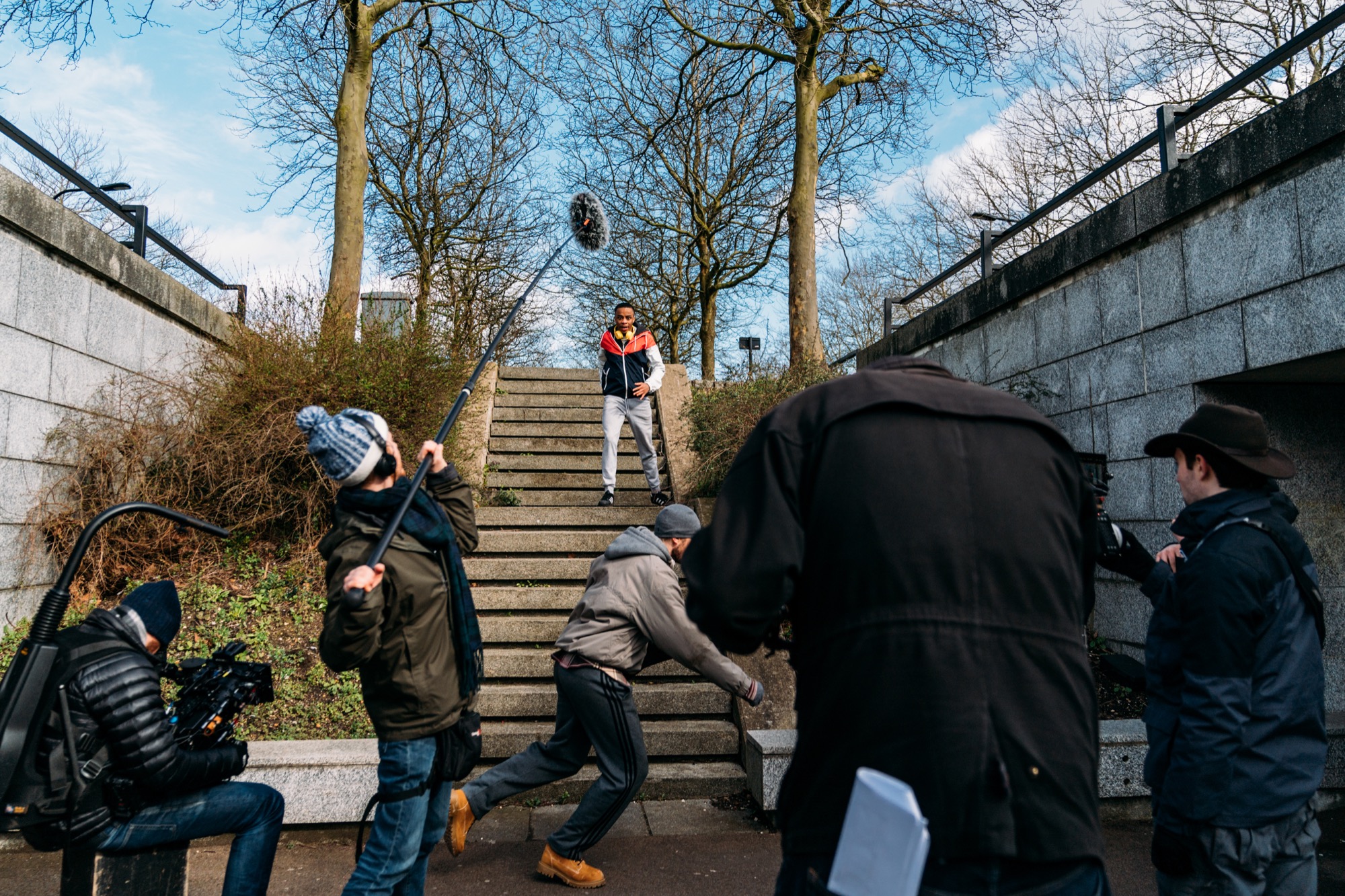
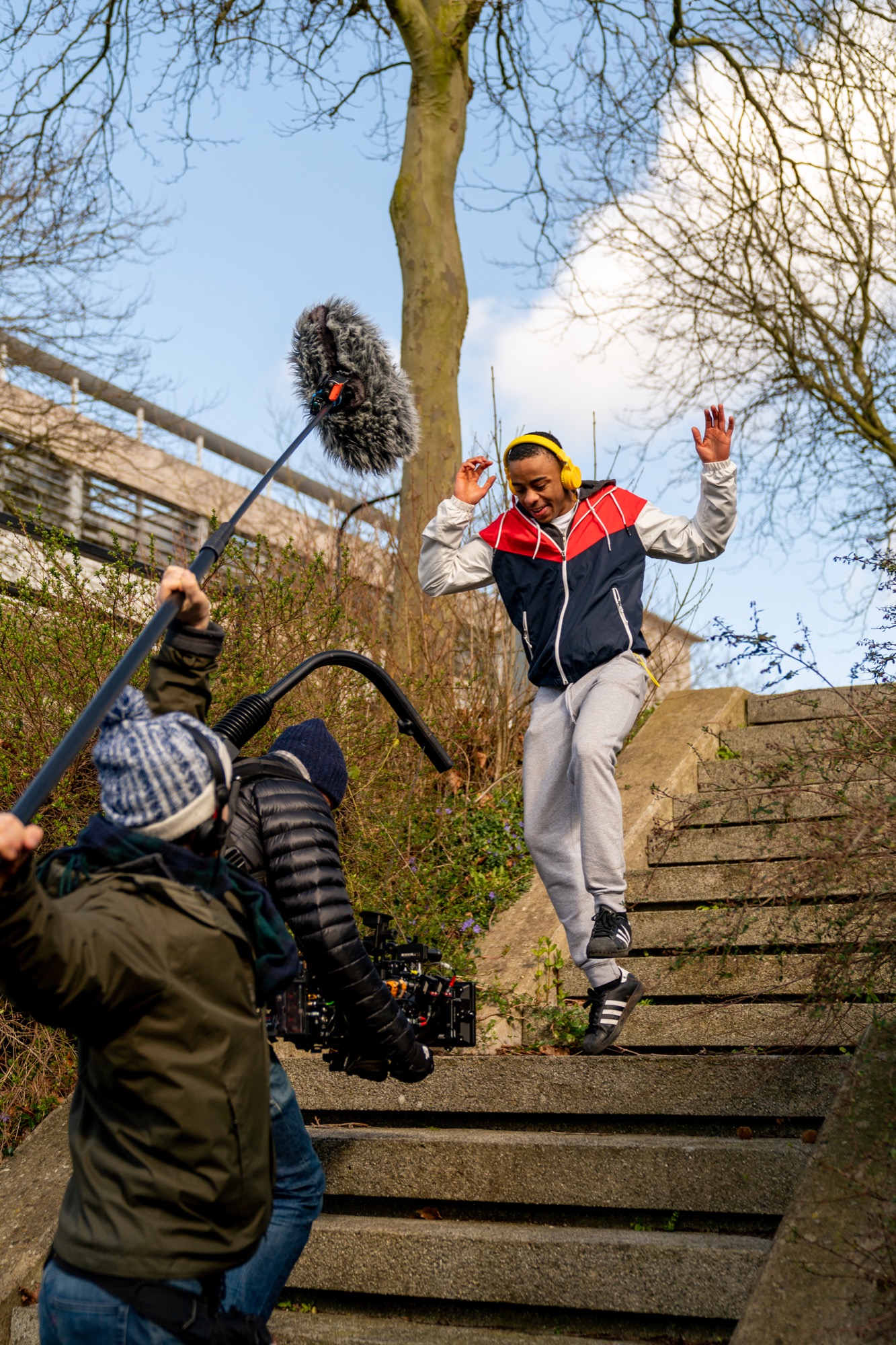
What did working with the Challenge Alexa Programme mean to you and the production of the film?
The main thing it provided, apart from the use of some wonderful free kit, was accountability. All of a sudden we had a deadline and a showcase – especially useful when you’re making an ambitious project because the temptation to jack it all in when things got difficult is a real actuality. With the scheme we had an obligation not just to finish but to make the best piece of work we could – we were one of the lucky ones to be chosen as a winning entry so we couldn’t let that opportunity pass. I remember being told to “be as bold as you can” with the storytelling and I love that they wanted the kit to embolden us like that. I like to think we took this advice.
I think the biggest lesson from this short is that it doesn’t matter if you have some fancy scene you can imagine in your head. If you can’t translate that into a cold hard reality that you can actually shoot then it’s not going to happen. Sometimes there’s this disconnect between the ideas in your head and the stuff that you see on screen, and the only person responsible for making that translation seamless is you. If you can’t answer how a dance step will be filmed or a fight sequence will play out, then how do you expect your crew to understand that?
Are there any future projects in the works you can tell us about?
I’ve got two feature scripts that I’ve been re-drafting and re-drafting, trying to get one ready to take out to investors. It’s that tricky balance of feeling like I need to get on with it but not moving too quickly and making something that isn’t ready. But this is a long game and slowly but surely I’m attracting the support of some fantastic collaborators and I hope to move into pre-production of my first feature by the end of the year. And in the meantime, I’m sure there may be another short as well.

